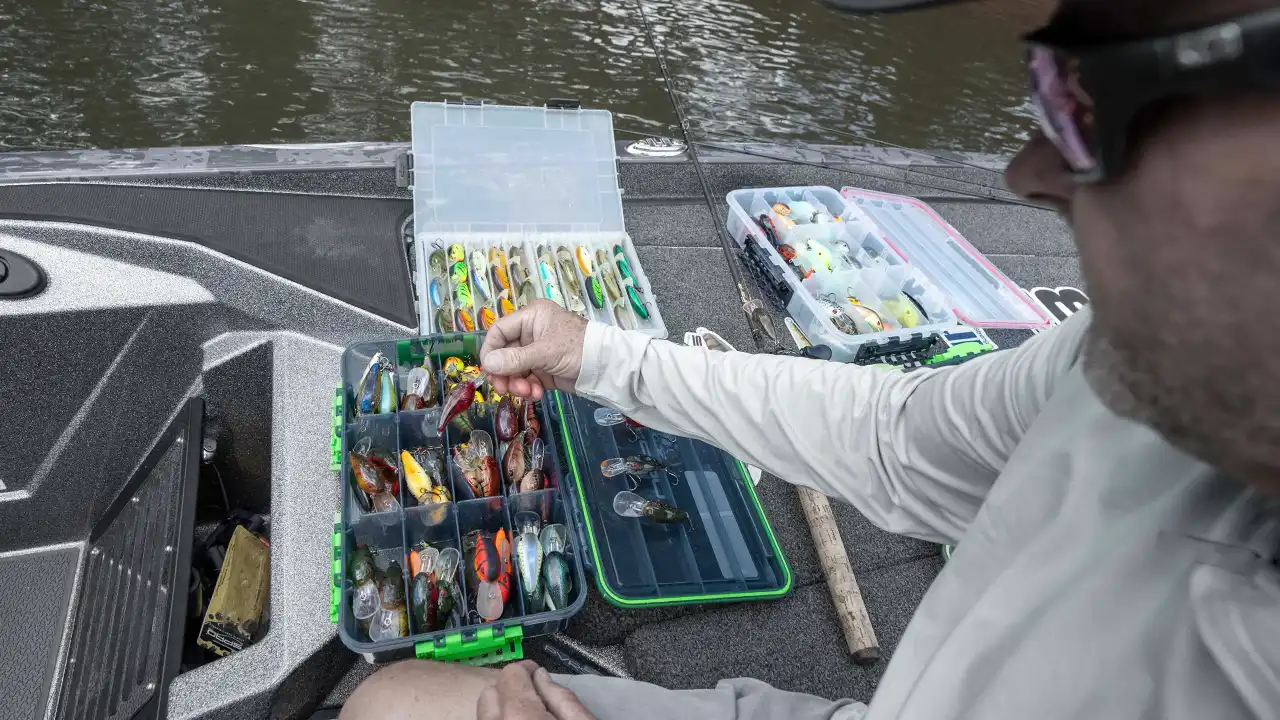Crankbait fishing is not a one-size-fits-all approach. In this video, professional angler Mike McClelland shares what he believes are the best crankbait choices depending on the type of lake, primary forage, and fish behavior. Throughout the country, there are many factors and variables that differentiate one body of water to another, so selecting the right bait is key to success.
FEATURED CRANKBAITS (retail links)
- CRANKBAIT – SPRO Mike McClelland RkCRAWLER 55: Buy at Bass Pro Shops | Buy at Tackle Warehouse | Buy at FishUSA
- CRANKBAIT – SPRO Mike McClelland RkCRAWLER MD 55: Buy at Tackle Warehouse
- CRANKBAIT – SPRO Mike McClelland RkCRAWLER 50: Buy at Tackle Warehouse
- CRANKBAIT – SPRO Mike McClelland RkCRAWLER DD50: Buy at Bass Pro Shops | Buy at Tackle Warehouse
- FLATSIDE CRANKBAIT – SPRO John Crews Little John 50: Buy at Bass Pro Shops | Buy at Tackle Warehouse | Buy at FishUSA
- FLATSIDE CRANKBAIT – SPRO John Crews Little John MD 50: Buy at Bass Pro Shops | Buy at Tackle Warehouse | Buy at FishUSA
- FLATSIDE CRANKBAIT – SPRO John Crews Little John DD Series: Buy at Bass Pro Shops | Buy at Tackle Warehouse | Buy at FishUSA
- SQUAREBILL CRANKBAIT – SPRO Russ Lane Fat Papa 70: Buy at Tackle Warehouse
- TACKLE BOX – SPRO Box 3700 Waterproo:| Buy at Tackle Warehouse
WHY CONFIDENCE AND CONDITIONS MATTER
One of the most important aspects of crankbait fishing is confidence in your lure. However, you must also match the bait to the fishing conditions. Water clarity, forage species, and lake structure all influence which crankbait will be most effective. Bodies of water like Ozark reservoirs feature clear water, rocky bottoms, and submerged timber. In contrast, lakes in the Southeast often have clay bottoms and a higher population of blueback herring, which can change fish behavior dramatically.
MATCHING BAIT SIZE TO FORAGE
Matching crankbait size to the lake’s forage is essential. If a lake has large gizzard shad, a bigger bait is the best choice. But when fish are feeding on smaller threadfin shad or crawfish, downsizing to a smaller crankbait can increase bites.
DEFLECTION AND ERRATIC MOVEMENT
Crankbaits that bounce off cover or the bottom create reaction strikes. For example, the SPRO RkCRAWLER’s hunting action helps it deflect unpredictably, triggering bites. Meanwhile, the Fat Papa squarebill has an exaggerated wobble, making it great for banging off rocks, wood, and other structure.












